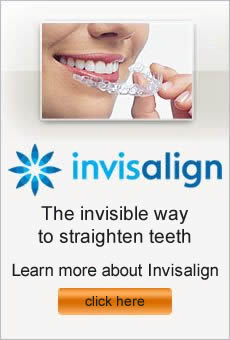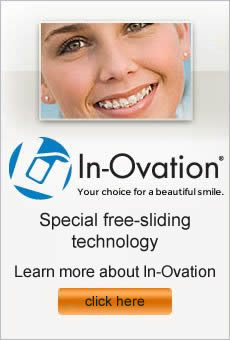What Causes Tooth Decay?
Tooth decay is very common. Young people are more at risk as their tooth enamel is less resistant to decay, but anyone can develop a cavity in a tooth, at any age. Tooth decay is caused when plaque is allowed to build up on the tooth surfaces. Plaque contains bacteria that feed on the sugars found in foods, and these bacteria produce acids that soften the tooth enamel. These acids continue to attack the teeth for approximately twenty minutes after eating. After this time the mouth gradually becomes less acidic, and the tooth enamel begins to re-harden. This is why it is best to wait for at least twenty minutes after eating before brushing your teeth, as brushing too soon disrupts the hardening process.
Reducing Your Risks
There are various other things you can do to help reduce the risk of developing cavities, and these include:
- Making sure you have good oral hygiene, as regular removal of plaque will reduce the numbers of bacteria in your mouth, so there are fewer left to produce acids whenever you eat.
- Reducing the number of snacks in between meals will reduce the number of times your teeth are attacked by acids. If you do want to snack then opt for a hard piece of cheese that is full of tooth-friendly calcium, or very crunchy fruits and vegetables that are high in fiber and which contain a lot of water. Fibrous fruits and vegetables have a slight scrubbing action on the teeth and the high water content helps to wash away excess food particles.
- Avoid highly acidic beverages and foods, as the acids will directly attack your tooth enamel.
- If you are unable to produce sufficient saliva (a condition called dry mouth), ask your dentist for advice on how to deal with this problem. Saliva is essential for helping to reduce acidity in the mouth, and for washing away excess food and bacteria.
- Regular professional dental care helps ensure any early signs of cavities are detected and treated before they can cause any problems.
Orthodontists office in Sherman Oaks, CA
A common question patients have when they are undergoing orthodontic treatment is whether or not they should continue seeing their dentist during that timeframe. The answer is yes, you should maintain your regular dental checkups even though you visit your orthodontic for periodic adjustments to your braces. Seeing your dentist throughout orthodontic treatment will help your teeth look their best when the braces are removed.
Cleanings
Professional teeth cleanings are the best way to fully get rid of plaque and tartar on your teeth. Food and bacteria can easily become hidden around your braces, causing plaque and tartar to build up around your bands, brackets, or appliances. Having your dentist clean your teeth will reduce your chances of developing cavities. If your braces are the clear Invisalign trays, you should still maintain regular dental checkups.
Decalcification
When calcium in your teeth is lost, it is called decalcification. This can lead to unsightly white spots on the surface of your teeth. If not treated, decalcification cannot be reversed and may cause cavities. Patients who avoid sugary or acidic foods, practice proper oral hygiene, and see the dentist regularly can avoid decalcification of their teeth.
Timing
The time that you have to undergo orthodontic treatment may be extended if you experience dental problems along the way. For instance, cavities can lengthen your treatment time. Your dentist can help you avoid cavities through professional cleanings and fluoride treatments. Seeing your dentist every six months will help you realize your goals of finishing orthodontic treatment.
Dr. Fotovat is a orthodontist in Sherman Oaks California.
Your teeth may be the last thing on your mind during pregnancy, but your oral health is actually a very important part of your body to consider during this time. Not only can dental problems affect an expectant mother, they can also impact her unborn baby. Here are some things to keep in mind about your oral health if you are pregnant.
Dental hygiene
Increased hormone levels during pregnancy can cause gum bleeding, inflammation, and higher risk of trapped food. Gum disease is more likely during pregnancy; in fact, gingivitis affects 60 to 75 percent of expectant mothers. If untreated, periodontal disease and tooth loss can occur. Pre-term births are even linked to gum disease. Therefore, following a strict routine of brushing and flossing will help avoid oral health problems.
Checkups
Women should continue to see their dentist throughout pregnancy. Tell your dental professionals that you are pregnant so that appropriate precautions can be taken. The second trimester is the perfect time to schedule a checkup. If you require extensive dental treatment like fillings, root canals, crowns, or extractions, discuss the procedures with both your dentist and your doctor to ensure your health and that of your baby are protected.
X-rays
Avoid routine X-rays during pregnancy. In some cases, X-rays are essential to handling a serious dental problem. According to the American College of Radiology, a single diagnostic X-ray does not contain enough radiation to harm your baby.
Medication
Dosages of any medication should be kept as low as possible. Category B drugs are considered safe in limited amounts. Be careful not to overmedicate yourself with over-the-counter pain relievers for a dental problem. Even though some drugs are approved, that doesn’t mean they can be taken in high doses. If antibiotics are needed, ask your dentist about which ones are approved to be safe for unborn children.
Anesthesia
Undergoing anesthesia should be avoided while pregnant. Lidocaine is commonly used in dental procedures, and is known to cross the placenta. This means that if it is used, the dosage should be kept low.
Family orthodontist in Sherman Oaks
You may have noticed more and more adults you know are sporting braces on their teeth. In fact, there has been a dramatic rise during the past two decades in the popularity of adults enhancing their smiles with orthodontic treatment. There are a number of unique advantages that patients have for choosing braces later in life.
Getting braces as an adult is a choice. Many youth who wear braces don’t have much say in the decision; parents choose to get braces for their children. On the other hand, adults may decide to get braces for the first time because they never had the opportunity as a child. Or some adults are undergoing a second round of treatment because they were negligent about following recommended guidelines after braces. Either way, adults who choose to get braces do not take the decision lightly.
For one thing, braces are a considerable investment of both time and money. Adults must take time off their jobs or busy schedules to visit the orthodontist. And most grownups no longer get to rely on their parents to pay for braces, so paying for it themselves can make a patient more committed to the process.
Adults tend to be more compliant in following the instructions while wearing braces. Certain foods can put you at increased risk for damaging your appliances, so adults are often more able to steer clear of restricted foods than kids. Adults also understand the negative effects that certain habits can have on teeth, such as smoking or eating sugar.
Adults take the time to care for their smile. That means brushing carefully after each meal to remove food particles from the braces, and even using special tools like orthodontic brushes or floss threaders. After braces are removed, adults usually follow through on the advice to wear retainers for the recommended time and are diligent about keeping up with appliances.
Getting braces as an adult is a great way to improve your smile so that you’ll be happy with it the rest of your life, and feel better about yourself in the process.
Orthodontist for adults in Sherman Oaks CA
Wearing braces is a tried and true way of straightening crooked teeth and correcting misaligned jaws. Braces are a solution for both adolescents and adults, and advancements have been made in the field of orthodontics to accommodate a variety of preferences and goals. The function is practically the same for all types of braces, but their appearances can be very different. Here are some of the main types of braces for you to consider.
Metal
The braces that many people are most familiar with are the traditional metal kind. They have metal brackets and wires, and some also employ rubber bands. Metal braces are very visible in your mouth, can be difficult to keep clean, and are accompanied by suggested food limitations so that braces aren’t damaged.
Clear
The most popular brand of clear braces is Invisalign, which consists of transparent aligners that are also removable. This type of braces eliminates many of the downfalls of metal braces, because they are hardly visible, easily removed for cleaning, have no food restrictions, and do not irritate the mouth. However, the effectiveness is dependent upon the patient’s commitment to wearing the aligners consistently.
Lingual
This type of braces is attached behind your teeth, providing their main benefit of not being visible to others. Initial discomfort is to be expected as your tongue gets used to touching the braces. Only specialists trained in lingual braces provide this kind, and they are often more expensive than other types of braces.
Ceramic
Similar to metal braces but made of ceramic, these braces are less visible because the ceramic is closer in color to your teeth. It is a little more costly to get this kind of braces and they usually aren’t as durable as metal, but many patients prefer the look of ceramic.
Dental braces at our Sherman Oaks orthodontists office.
Sometimes a person’s jaw is not big enough to allow the teeth to come in properly, which can create problems such as incorrect bites. If the jaw size isn’t corrected in time, it can require serious orthodontic treatment in the future. Palatal expanders provide a way to correct children’s jaws while they are still growing.
What is a palatal expander?
An orthodontist attaches a palatal expender in the roof of the patient’s mouth to widen the palate so that the jaws fit together correctly. The expander works over time to separate the two halves of the upper jaw to create a wider distance between them. To be effective, the palatal expander must be worn before the median suture of the jaws close together.
Why is it necessary?
A typical result of an untreated jaw formation is a cross bite, which often leads to problems with the temperomandibular joint, abnormal wear on teeth, and receding gums. Wearing a palatal expander prepares the mouth for additional orthodontic correction like braces, and makes room for permanent teeth and less crowding within jaws that are too small.
What is the process like?
To activate the expander, a small key-like device must be turned in the appliance. A parent or other adult should turn the key as instructed by the orthodontist, usually once a day until the desired expansion has occurred. Most patients wear the expander for three to six months. Although it works by putting pressure on the teeth, it is usually not painful. During wear, patients should avoid sticky or hard foods and brush their teeth carefully.
When is it effective?
Remember, palatal expanders only work while the jaw is still growing. Parents should monitor their child’s mouth for growth, and maintain regular dental checkups to identify problems early. If this problem isn’t treated during youth, it can mean painful and extensive procedures as an adult.
Orthodontist in Sherman Oaks CA for teens and adults.



